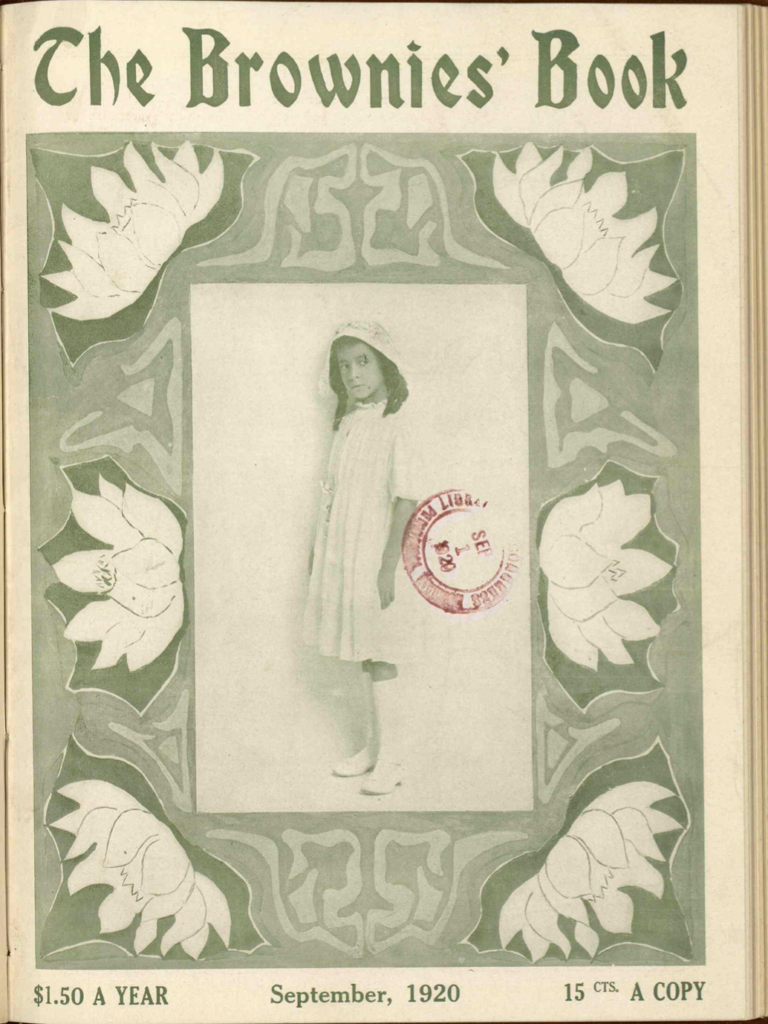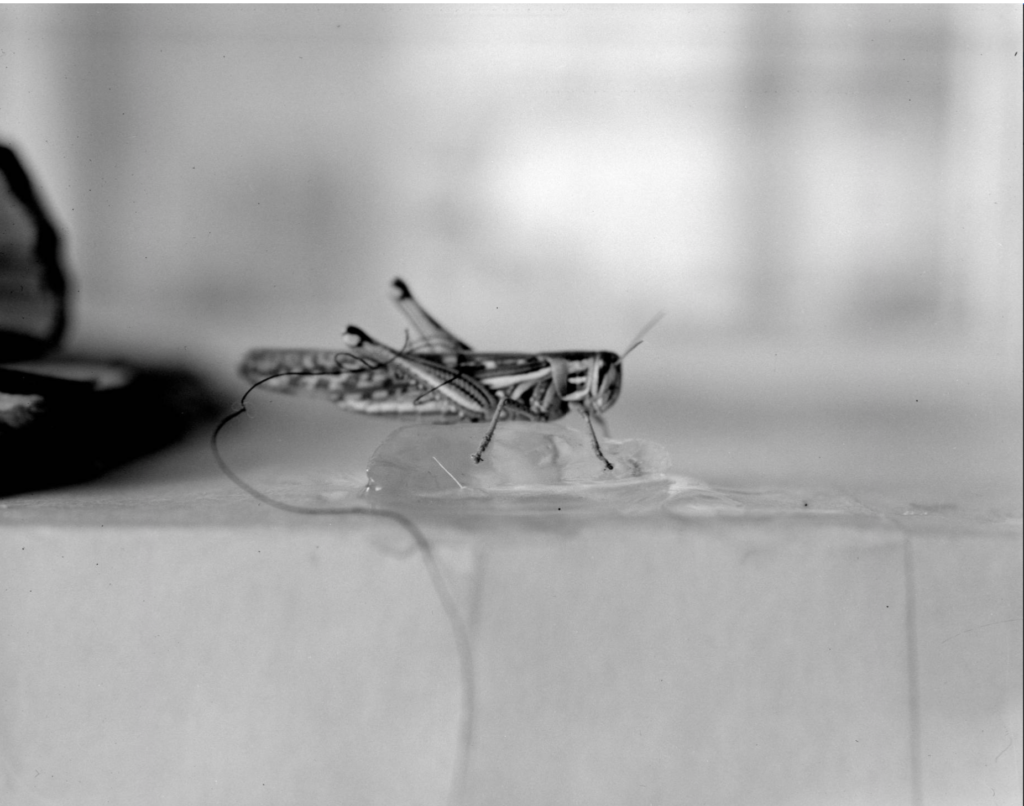The Grasshopper
By Mary Effie Lee
Annotations by Catherine Bowlin

O HAPPY little grasshopper [1] In shirt of lettuce-green, With wings as thin as isinglass [2] And sprightly legs and lean! O little leaping grasshopper, I watched you spring and pass, And found that though your name sounds so, You don't just jump on grass. You sped right by Parnassus grass [3] To land on daddy's knee; Then made my tie a boulevard, As we sat by the tree. I saw you pass some fox grass once [4] And light––snap!––on a rose: So, after all, one's not known by The name one's parents chose.

Lee, Mary Effie. “The Grasshopper.” The Brownies’ Book, ed. W. E. B. Du Bois, vol. 1, no. 9, New York, N.Y.: DuBois and Dill, September 1920. 286. Retrieved from the Library of Congress, <www.loc.gov/item/22001351/>.
[1] Grasshopper: any of a group of jumping insects (suborder Caelifera) that are found in a variety of habitats. Grasshoppers occur in greatest numbers in lowland tropical forests, semiarid regions, and grasslands. They range in color from green to olive or brown and may have yellow or red markings.
[2] Isinglass: a semitransparent whitish very pure gelatin prepared from the air bladders of fishes (such as sturgeons) and used especially as a clarifying agent and in jellies and glue.
[3] Parnassus grass: this perennial herbaceous wildflower consists of a tuft of basal leaves, from which one or more flowering stalks develop. The blades of the basal leaves are oval in shape and entire (toothless) along their margins.
[4] Likely fox grass: foxtail weed (Setaria) has wide leaf blades, much like the turf grass in which it may grow. The base of the leaves has fine hairs and the stem rises from a collar at the base of the leaf.
Contexts
Later known as Effie Lee Newsome, Mary Effie Lee was born in Philadelphia and was famous for writing nature and children’s poems during the Harlem Renaissance. Lee worked for The Crisis Magazine, the monthly publication of the NAACP, where W. E. B. Du Bois worked as her editor. From 1925 until 1929, Lee edited a column in The Crisis called “The Little Page”. In her column, it was Lee’s job to carry out Du Bois’s goal for The Brownies’ Book: to encourage young Black children to feel pride for their race.
See Wonders: the Best Children’s Poems of Effie Lee Newsome (Wordsong/Boyds Mills Press, 1999) and Gladiola Garden: Poems of Outdoors and Indoors for Second Grade Readers (The Associated Publishers, 1940) for other works by Mary Effie Lee.
Resources for Further Study
- Biology of Grasshoppers. Eds. R. F. Chapman and Anthony Joern. John Wiley & Sons, Inc.: Canada, 1990.
- Fun Grasshopper Facts for Kids
- Odell, Patrick L. “Bugs, Beetles, Grasshoppers, and Kids.” Westview: vol. 13: issue 3, 1994. https://dc.swosu.edu/westview/vol13/iss3/10.